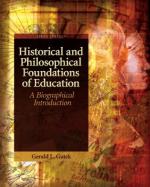
|
| Name: _________________________ | Period: ___________________ |
This test consists of 15 multiple choice questions and 5 short answer questions.
Multiple Choice Questions
1. Who was involved in this new movement?
(a) Thomas Jefferson.
(b) Thomas Aquinas.
(c) John Calvin.
(d) Sigmund Freud.
2. The dynasty used rules of _____ throughout its reign.
(a) Endowment.
(b) Capitalism.
(c) Monarchy.
(d) Paternalism.
3. How old was Alexander the Great when he died?
(a) 33.
(b) 41.
(c) 29.
(d) 38.
4. Who was known as the Scholastic Theologian?
(a) Plato.
(b) Aquinas.
(c) Mann.
(d) Montessori.
5. In which year did China become a republic?
(a) 1848.
(b) 1902.
(c) 1876.
(d) 1912.
6. The emperor was thrown out of a window and landed in a pile of ____.
(a) Hay.
(b) Trash.
(c) Manure.
(d) Dirt.
7. What were the individual regions in Greece called?
(a) Sectors.
(b) City-states.
(c) Hamlets.
(d) Divisons.
8. Gutek's work follows which type of progression?
(a) Orderly.
(b) Reverse.
(c) Chronological.
(d) Sideways.
9. Who had supreme power in the Church?
(a) Bishops.
(b) Diocese.
(c) Pope.
(d) Cardinals.
10. Gandhi, Du Bois, and Freire represented India, African Americans, and ______.
(a) Peru.
(b) Brazil.
(c) Guayana.
(d) Chile.
11. It is said that Confucius developed his philosophy during a time of turmoil and _____.
(a) Upheaval.
(b) Serenity.
(c) Confusion.
(d) Unrest.
12. The Catholic Church used Plato's philosophies to maintain influence during which period?
(a) Post-modern.
(b) Medieval.
(c) Modern.
(d) Renaissance.
13. Aquinas chose to study the works of which great philosopher?
(a) Aristotle.
(b) Confucius.
(c) Plato.
(d) Sophocles.
14. The emperor belonged to which famous family?
(a) Hapsburg.
(b) Bonaparte.
(c) daVinci.
(d) Medici.
15. One of the people most well known for educational reform was:
(a) Mann.
(b) Williams.
(c) Thompson.
(d) Jenkins.
Short Answer Questions
1. Plato originated from which country?
2. Which dynasty took its place?
3. What is the meaning of B.C.E.?
4. The Thirty Year's War began in which location?
5. Where did Aquinas go to school?
|
This section contains 261 words (approx. 1 page at 300 words per page) |

|




